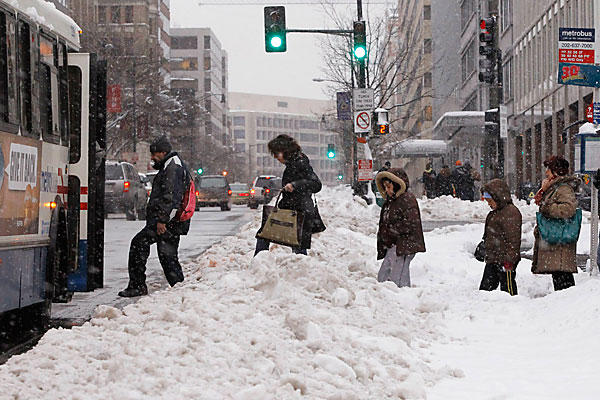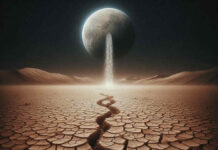
 Global warming is “loading the dice” to increase the frequency of record-setting snowstorms like those that have pounded the United States and Europe the past two winters, according to Union of Concerned Scientists (UCS).
Global warming is “loading the dice” to increase the frequency of record-setting snowstorms like those that have pounded the United States and Europe the past two winters, according to Union of Concerned Scientists (UCS).
“Heavy snowstorms are not inconsistent with a warming planet,” said Jeff Masters, director of meteorology for the Weather Underground website. “In fact, as the Earth gets warmer and more moisture gets absorbed into the atmosphere, we are steadily loading the dice in favor of more extreme storms in all seasons, capable of causing greater impacts on society.”
Masters pointed out that in each of the past two winters the northeastern United States has been hammered by three snowstorms that qualified as Category 3 storms or worse on the Northeast Snowfall Impact Scale. That has happened only one other time in the past 50 years—during the winter of 1960-1961. This winter and last, New York City experienced its two snowiest months on record—February 2010 (36.9 inches) and January 2011 (36 inches)—and Philadelphia experienced four of the top 10 snowstorms in its history. In the Midwest, Chicago was hit by its third biggest snowstorm on record early this February and Minnesota, South Dakota and North Dakota all have suffered through near-record snows this winter.
While sections of the United States have experienced stretches of unusually cold weather this winter, temperatures have not been significantly below average. That, too, provides an explanation for the heavy snowfalls.
“The old adage, ‘It’s too cold to snow,’ has some truth to it,” said Masters. “A colder atmosphere holds less moisture, limiting the snowfall that can occur.” He cited a study that found that a high percentage—as much as 80 percent—of all snowstorms in the United States of more than 6 inches during the 20th century occurred during winters with above average temperatures.
“If the climate continues to warm,” he added, “we should expect an increase in heavy snow events for a few decades, until the climate grows so warm that we pass the point where it’s too warm for it to snow heavily.”
The warming trends have been particularly strong in the Arctic, said Mark Serreze, director of the National Snow and Ice Data Center in Boulder, Colorado. Serreze, who has been studying Arctic climate since the early 1980’s, noted that temperatures there have been near record high levels this winter and that the area covered with sea ice shrunk to record low levels for December, January and February.
Not only does less sea ice mean more moisture in the atmosphere, said Serreze, it also could affect global weather in other ways. For the second winter in a row, he explained, scientists have seen an unusually strong negative phase of the Arctic Oscillation, an atmospheric circulation pattern in polar regions. During a negative phase, when atmospheric pressure is higher than normal in the Arctic, wind patterns bring warmer than average temperatures to the Arctic, while colder air spills down into the middle latitudes in the U.S. and Europe.
Recent research suggests that the low levels of sea ice could be a factor in causing negative Arctic Oscillation, Serreze said. “It’s still cutting edge research and there’s no smoking gun, but there’s evidence that with less sea ice, you put a lot of heat from the ocean into the atmosphere, and the circulation of the atmosphere responds to that. We’ve seen a tendency for autumns with low sea ice cover to be followed by a negative Arctic Oscillation.”
The string of heavy snowfalls across the United States this winter is not yet over, according to Masters. “One or two major snowstorms are expected to hit the Upper Midwest next week,” he said. “They already have piled up snow pack there that’s among the wettest on record and that threatens to unleash what could be record floods in Minnesota, South Dakota and North Dakota this spring.
“We’re also experiencing spring creep, where the warmer than average temperatures are shortening the length of winter,” Masters added. “For instance, we’re now seeing spring runoff in the mountains in the western U.S. starting one to three weeks earlier than 60 years ago.
“If the climate continues to warm we should expect an increase in heavy snowstorms for a few decades. But eventually, with winters getting shorter, we may reach the point where it’s too warm to snow heavily.”



